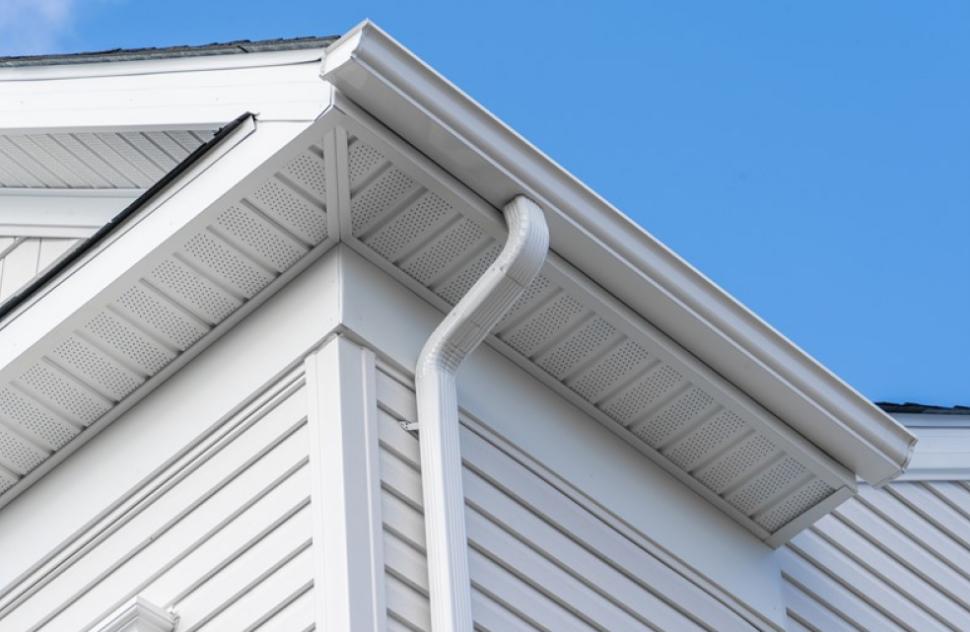Good ventilation is essential to maintaining a healthy, high-performance home. Soffit vents go largely unnoticed in most homes, but they are crucial in providing circulation and air flow. Chances are, if you’re a homeowner focused on energy efficiency or don’t want costly damage to your home, you have soffit vents but may have never dug into understanding what’s really happening — we’ll cover that from what soffit vents are to how to maintain them.
Thank you for reading this post, don't forget to subscribe!What Are Soffit Vents And Why Are They Important?
Soffit vents are small holes in the soffit that are meant to let fresh air enter your attic and ensure it stays well ventilated. They work along side ridge or roof vents and are part of a balanced attic ventilation system that helps keep the attic cool and dry.
Why does this matter? An adequate ventilation system will stop numerous problems before they start, anything from energy bills that are through the roof to structural damage that is just horrific. Without those soffit vents, your attic is essentially a heat trap in the summer — meaning your cooling costs go up — or a moist haven in the winter, encouraging mold and rot. In other words, soffit vents are a small feature that can make a big difference.
Various Soffit Vents
The Type of Soffit Vent Matters When it comes to soffit vent selection, the type of vent to choose can be significant for both performance and appearance. Here’s a closer look at what the choices are:
Material Choices
Aluminum: Long-lasting and rust-resistant, aluminum soffit vents are the perfect option for changing climates.
Vinyl: Affordable and easy to maintain, vinyl is a common choice for new-build houses.
Wood: Less common, wood soffit vents can provide a classic appeal, but need regular maintenance to prevent rot.
Design Variations
Continuous Vent: These vents are continuous in length for full soffit coverage and maximum airflow, while still maintaining the aesthetics of the overall design of the home.
Sofit Vents: The Cheapest Option These are installed in the intervals of the soffit and may even be the cheapest in delivery and the ability of the installer to ensure every nook and cranny is adequately ventilated, but it may take more time to install.
Round Vents: Commonly seen in more confined areas, such as secondary outlets, as well as an aesthetic option.
Installation Methods
Some soffit vents can be installed retroactively, so they’re great for older homes. Others, such as continuous vents, are most practical to add during new home building or significant roof remodeling.
Knowing what materials you can work with and designs you have to choose from right from the beginning can certainly help to achieve the perfect blend of beauty and utility to fit your requirements.
The Advantages of Better Soffit Ventilation
There are several significant benefits to investing in good soffit ventilation. Here’s why it’s a non-negotiable in a healthy home:
Energy Efficiency
A well-ventilated attic is cooler in the summer and reduces the buildup of warm air. This eases the burden on your HVAC system, and in turn saves on energy costs.
Prevents Moisture Damage
Soffit vents help provide fresh air flow and keep an attic cooler to keep air conditioning from having to work as hard. This removes the risk of molds, mildews, and rotting wood.
Protects Your Roof
Excess heat and humidity are bad for your roof shingles and your pocketbook! And good ventilation via soffit vents will help your roof last longer by staying dry and cool.
Improves Air Quality
Soffit vents also keep out the critters and with that diseases that might compromise the health of your home and that of your family by preventing mold and mildew you protect indoor air quality.

4 Common Soffit Vent Problems and How to Repair Them
Not even the top ventilation systems get a free pass. Below are some of the most common soffit vent problems and how to solve them.
Blocked Vents
Soffit vents can become clogged with debris such as dust, dirt, or insulation which will obstruct the flow of air. This can be solved with regular vacuum cleaning or apply a soft brush.
Pest Intrusion
And if they’re not sealed correctly, birds, squirrels and some insects will make their way into your soffit vents. Fit some pest screens or grilles and you can make sure your unwanted guests can’t get in.
Insufficient Ventilation
Sometimes, there are just not enough soffit vents installed to encourage ventilation. Your best bet is to hire a pro, both to inspect your current home’s entire system and add more vents, if necessary.
DIY or Professional Installation
If it’s time to install or replace the soffit vents in your home, you may be having an internal debate over doing it yourself (DIY) or hiring a professional. Here’s how to decide:
DIY Installation
Soffit Vent Installation If you are handy, soffit vent installation is a pretty easy project for you. Here’s a simple step-by-step: Step 1 Apply sunscreen with an SPF of 30 or higher all over your face, neck, 1 1/2 inches below the opening of your neckline, on your ears and on the back of your neck.
Take your measuring tape and the marker and measure out where each vent should be placed -make sure each vent is evenly separated from each other.
Cut rectangles or Holes by jigsaw or hole saw to install as vent opening; All you need to do is cut the opening in your floor, wall or ceiling, easily You can measure the opening and cut the appropriate size of the hole in your floor, wall or ceiling. Wear protective gear!
- Fasten with screws Vents and a flush fit.
- Caulk or weatherstrip edges to keep out water and pests.
DIY can save you money but is really best suited to meso-friendly folks with experience roofing and installing vents.
Professional Help
Professional services may be necessary if you live in an older home, have a large-scale installation, or need help diagnosing ventilation issues. Professionals will be able to site things in the best location for greatest performance, frequently supported by a work warranty.
Looking After Your Dry Brush for Lasting Performance
With regular maintenance, you will be able to extend the life of your soffit vents, while keeping your ventilation system running smoothly. Here’s how to do it:
- Clean Your Vents have them inspected annually for obstructions, damage, or the presence of pests.
- In addition, you can vacuum out your vents with the soft brush attachment or blow them out with the air compressor.
- Rust and corrosion On aluminum ventilators, repair or paint where necessary.
- Check for Indoor Concerns, including mysterious dampness and high utility bills that may point to indoor ventilation issues.
Make Your Home Energy-Efficient with Ventilation
So you use your soffit vents to give them all some light and air once in a while, right? By reading about the various types and the advantages of properly maintaining your unit, you’ve gotten a head start on building a long-lasting, well-ventilated system.
If you’re ready to begin your soffit vent installation or upgrade, but need professional assistance, be sure to reach out to our experts for help. We’d love to help you protect your home and make it more healthy and comfortable.



